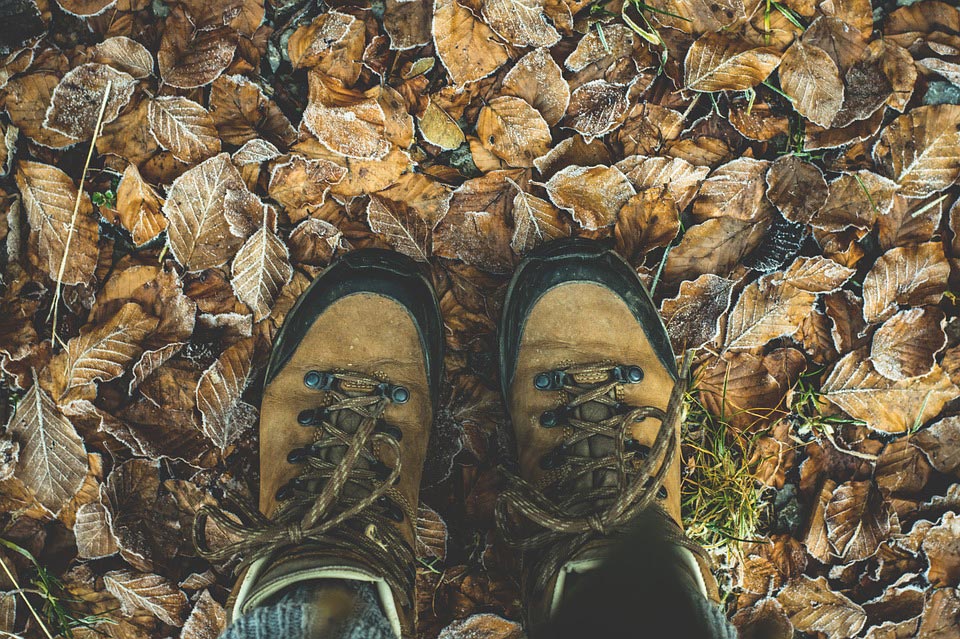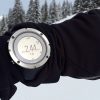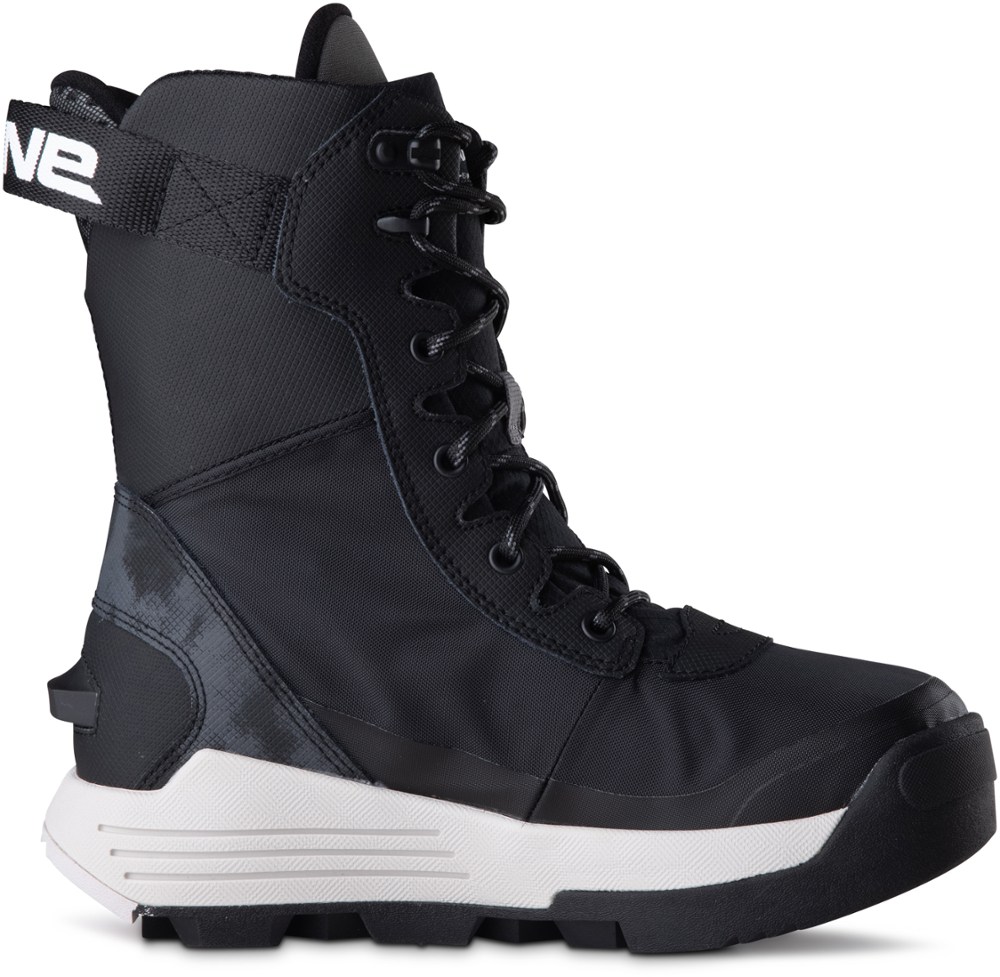
Hiking over any distance puts a great deal of stress on your feet and ankles, which is transmitted upward to the legs and affects your back and indeed your whole body. Most people think in terms of bad boots giving you blisters, the real problem is not the possibility of blisters but a lack of good solid support.
You’ll be scrambling over wet rocks, slippery gravel, flaking hills, and muddy trails and, while no boot can cope perfectly with every eventuality, a good pair of hiking boots will come pretty close.
Modern well-designed hiking boots will utilize various materials and geometries to minimize slippage on wet rocks and maximize sticking power on flaking hill grades and Vibram lugs with some kind of tread should be a minimum requirement. These look a little bit like car tires, but with a little more plastic and a little less rubber.
A good pair of boots will provide both the stiffness and springiness that your foot and ankle need. You need to be able to press off the ground, whatever the surface, with confidence and know that your boots will support you. Without this support, sore feet and ankles, or even twisted ankles, are virtually guaranteed.
Table of Contents
The Very Basics for Hiking Boots
Buy a pair of hiking boots that feel right for your feet and that doesn’t simply mean buying boots that are the right size.
Get boots that feel good the minute you put them on and don’t be fooled by the old adage that ‘they’re bound to feel a little uncomfortable until you break them in’.
Boots will, of course, wear in, but if they don’t feel right when you buy them then they will rarely feel right later on.
When we talk about comfort it’s easy to substitute the word luxury these days but, when it comes to hiking boots, comfort is a necessity rather than a luxury.
You need to be able to walk long distances without producing blisters or chafing and you need to be able to wear your boots for long periods of time without moisture building-up or excessive heat or cold becoming a problem.
Many boots today are made from a variety of specialized materials but, perhaps surprisingly, leather is still a large component of really good hiking boots.
Hiking doesn’t necessarily require a great deal of equipment one item that is crucial to your enjoyment is a good pair of hiking boots.
A good pair of hiking boots will give you comfortable support and provide the traction that you need for even the trickiest of surfaces. A bad pair of boots, however, can make a day’s hiking sheer misery.
Bear in mind too that hiking boots are not hiking shoes.
They should feel stiff and have little given on the outer sole and around the ankle if they are to do the job that they’re designed to do.
There are of course other things that you should look out for, such as gusseted tongues that keep out stones and grit, but the major features covered here will provide you with an excellent starting point.
Hiking Boots: Step Into The Perfect Fit
It is well worth it, therefore, to make the investment of time and money in finding the right boot. What are the criteria to look for?
There are only two rules for buying hiking boots: good quality and good fit. If it is that simple, why do so many hikers end up wearing poorly fitted boots?
Boots that don’t fit right can also lead to sore knees, ankles, hips, and back. The 26 bones of your feet support the entire weight of your body and backpack. Since your boots determine the comfort and support of your feet, which in turn support your entire weight, hikers generally agree that the most important piece of hiking gear is the boot.
According to Backpacker magazine, seventy percent of hikers wear boots that don’t fit right– and they often don’t even know it. Their boots leave them with blisters and sore feet, but they think that’s just part of hiking. Not so. Pain is not a natural part of enjoying the outdoors.
Hiking Boots for Women
Hiking Boots for Men
Quality of Hiking Boots
When it comes to boots, you get what you pay for. Inexpensive boots are made from cheap materials that bind, chafe, and fail to protect your feet from moisture and other hazards. Manufactures cut down on costs by cutting corners; you pay the price in terms of lost comfort, and it is never worth the money you “saved.”.
You will be able to find an excellent boot for under $200, but unless it’s on a super-sale, you probably won’t find a quality boot for less than $100.
Of course, shop for your hiking boots wearing the hiking socks you normally use so their thickness is part of the fit.
It’s no accident that leather has been used for many years in the manufacture of shoes and boots and is still used today because it is tough, water-resistant (when treated), has good stiffness, and has excellent moisture and thermal properties.
Features of Hiking Boots
Look for at least two sets of lace hooks at the top. Lace holes make it more difficult to adjust your lacing for up-and downhill stretches, and manufacturers of good boots know this.
The tongue should be pleated to keep out water. And the sole should have an effective traction design and be stiff enough for your typical use (trekkers carrying heavy packs need stiffer soles than day hikers, for instance).
The exterior material should be waterproof and durable. The interior material should be smooth; no chafing and no sticky, poking seeds.
Fitting of Hiking Boots
Don’t even think about “breaking them in.” Hiking boots pack down somewhat and form to your foot, boots that rub or bind anywhere will never fit. Make sure that your toes have room. If they are touching the front of the boot at all, your downhill hikes will be painful, no matter how good you are at lacing.
The really serious hiker will probably possess several pairs of boots to cope with different forms of hiking but for the novice, one good sound pair of boots will do for starters and, if you buy wisely, they should last you for many years.
If you follow these guidelines, you will end up with hiking boots that will last for many years and make every hike a pleasure.



